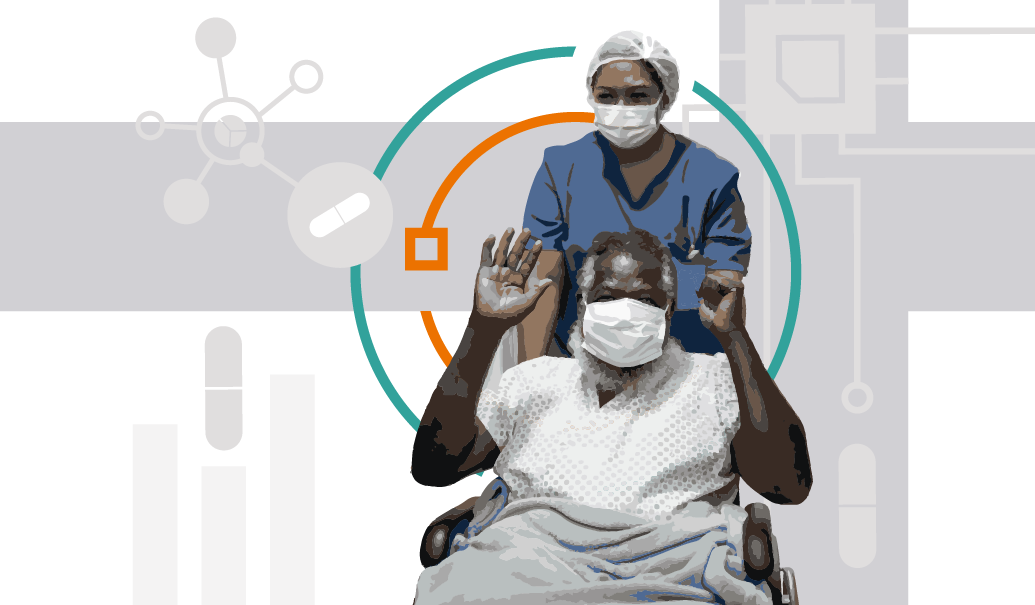Overall, the cell and gene landscape has evolved quite substantially since the first approval around seven years ago. Many of the initial challenges faced with cell and gene therapy commercialization have begun to be addressed, with some sources suggesting the market could reach over $80 billion by 2032. The subset of this market identified as in vivo and ex vivo gene therapies, represents some of the most expensive drugs ever commercialized, with multimillion dollar price tags. Today, we have less than 10 of these therapies approved, but we anticipate more than 30 additional approvals by 2030 (according to data from Evaluate Pharma and Citeline). Now, the ecosystem must prepare for the impact of a tsunami of gene therapies and the yet-to-be-known implications of how hospitals and manufacturers can navigate a gene therapy-crowded world.
Are hospitals and manufacturers alike ready? Our research with respondents from gene therapy centers in neurology, metabolic science, ophthalmology and hematology has made it clear that the world of gene therapy has already reached its inflection point. Hospitals will soon start to make decisions on evolving their financing, therapy focus and hiring and infrastructure needs while manufacturers adapt to engage the broader ecosystem, advance financial management and customize services to reduce burden.
The challenges for in vivo and ex vivo gene therapies
It will not be a surprise to manufacturers that the commercialization of gene therapies is different than small molecules and other biologics—the day-to-day of providers administering gene therapies is also different and largely novel. Despite the influx of gene therapies, hospital-level patient volume remains low given the rarity of the conditions or payer-mandated controls on eligibility. As a result, most sites have largely been able to operate within existing means in terms of human capital and infrastructure needs, even sharing resources across hospital units as appropriate. In vivo and ex vivo gene therapies, however, create intermittent but meaningful and heavy disruptions at gene therapy centers.
Contracting between hospitals, manufacturers and specialty distributors is deemed particularly onerous and time-consuming. There is extensive due diligence necessary to evaluate the financial viability of onboarding the gene therapy, followed by a series of back-and-forth negotiations that take anywhere from four months to one year to finalize.
Given the seven-figure price tag of most gene therapies today, financial and logistical liability for gene therapies between contracting parties are points of contention, with both sides increasingly reluctant to take accountability of gene therapies’ logistical and financial risks. This results in cascading negotiations where all parties involved try to shift responsibility to the other. Hospital legal and finance teams are overwhelmed given the in-depth assessments of contracts needed relative to other therapies.
How it compares: Ex vivo gene therapies are the most challenging cell and gene therapies to contract for, given chain of custody and chain of identity considerations similar to CAR-Ts overlayed on top of the costly financials associated with gene therapies. Autologous CAR-T contracting has become far less involved due to experience with previous autologous CAR-Ts and its significantly lower price-tag.
Site investment and onboarding considerations
Upfront investment and complexity during onboarding varies depending on the site’s current capabilities and prior experience. Some departments can collaborate to ensure readiness and share knowledge and protocols when a site has prior commercial or clinical cell and gene experience; advanced centers can leverage existing infrastructure within the broader hospital as needed and existing personnel can be trained. Larger investments are likely necessary for smaller tertiary centers where a new gene therapy is in a therapy area that did not previously require advanced infrastructure.
How it compares: Ex vivo gene therapies require limited upfront investment if handled within transplant centers that have existing infrastructure. In vivo gene therapies, by comparison, may require some investment based on the variables above.
Site cashflow concerns
Cashflow concerns have already started to arise at some institutions despite the low total patient volume. Centers are limiting the number of gene therapies administered within the same time period to maintain healthy cashflow, particularly since they may wait months until receiving payment from payers.
How it compares: Ex vivo gene therapies are generating greater financial stress on institutions due to the upfront payment and multimonth hospital stay requirements. Institutions are only paid following discharge, waiting on average up to six months post-payment to be reimbursed. Hospitals typically get paid faster for in vivo gene therapies, despite payment terms remaining long (given the price tag), due to the no or minimal required hospital stays. Given the lower price tag of autologous CAR-Ts, the degree of cashflow impact seen with gene therapies has not applied to hospitals.
Reimbursement options
To help providers balance financial risk and profit, many manufacturers have offered flexibility in reimbursement options by providing white-bagging options in addition to buy-and-bill. The institutions we spoke with seemed to have varying preferences for either approach. Those who do not opt for white-bagging do not access the product markups typically associated with buy-and-bill (such as ASP+), with commercial payers negotiating lower and more reasonable rates on multimillion dollar therapies. 340B sites, however, are claiming ability to leverage 340B status for greater profitability.
Despite these lower rates, larger hospitals with more cash stores and liquid assets still prefer the buy-and-bill model to white-bagging. This is due to the perceived financial loss with white-bagging, as there is significant administrative work associated with gene therapies whose costs are not fully offset by the profit from the therapy. However, most hospitals with emerging gene therapy capabilities are likely to prefer white-bagging, given the financial risk of mishandling and the large cash outlay.
What remains unclear is how influential certain payers are, or will become, in enforcing the white-bagging model onto certain therapies and sites in the future.
Operational disruptions at the site level
Operational disruptions are significant before and after the administration itself. For the average neurologist or ophthalmologist, monitoring for a gene therapy long-term requires four times the effort as other procedures—with overall paperwork increased tenfold. However, for specialties familiar with similar complex treatments, like transplanters, the additional and perceived effort is much more in-line with current expectations.
Gaining patient-level financial clearance (such as prior authorization) from payers and the associated clinical documentation has become a core pain point, especially with the emergence of elective gene therapies (Hemgenix in hemophilia B, for example). Payers have been stringent and increasingly skeptical of durable outcomes as faults in long-term efficacy of gene therapies have come to surface in recent years. Just to obtain prior authorization, institutions are spending around 10-16 hours for each gene therapy patient compared to around one hour for each non-gene therapy patient.
In our co-sponsored research, 77% of autologous CAR-T centers perceived reimbursement being majorly burdensome. All centers we spoke to that administered both gene therapy and CAR-T perceived those concerns to be even more salient for gene therapy.
The gene therapy site of the future
With the rising number of FDA approvals for gene therapies, hospitals will need to make decisions on evolving their financing, therapy focus, and hiring and infrastructure needs. These are likely models of site evolution:
- Focused business model. Many sites will be unable or unwilling to invest in expanding; they will have to determine what limits they want to place upon gene therapies. An expertise-driven site would offer a select set of gene therapies in certain therapeutic areas (for example, only in ophthalmology and neurology). This would minimize additional infrastructure purchases or hiring. Finance-driven sites would offer gene therapies based on whether the reimbursement model available matches their desired appetite for financial risk—likely favoring a white-bagging approach to maintain healthy cashflows.
- Broader gene therapy center of excellence (COE) model. Some sites may be willing and able to accommodate the greater number of available gene therapies and their associated patient volumes. These COEs will want to focus on the following:
- Forming dedicated gene (and cell) therapy teams. Increasing the volume and transitioning from cross-trained existing staff to dedicated teams may enable greater efficiencies.
- Expanding infrastructure. Sharing equipment across hospital units will become more challenging and will be restrictive (particularly with the parallel growth of cell therapies).
- Adapting to a hybrid reimbursement model. Hospitals will need to leverage an innovative reimbursement model that allows them to sustain a healthy cashflow to strike a balance between generating profit and expanding patient volume.
3 ways for cell and gene therapy manufacturers to adapt to site needs
With the state of gene therapy reaching its tipping point and hospitals becoming more selective with therapies, gene therapy manufacturers will be pushed to adapt. We see three major actions they will need to take as they prepare for launch:
Engage the broader ecosystem. A wider net of COEs will help buttress against higher rates of hospital unwillingness.
Advance financial management. Standardized contracting is one area of innovation that we believe can help make therapies more appealing, as is making reimbursement models more flexible and exploring ways to share some of the risk that providers currently incur (while still protecting financials).
Customize service to reduce burden. Tailor support more to individual hospital needs as they increasingly expect in-depth “white-glove service” manufacturer support. Advance contracting and onboarding earlier to account for potential year-long negotiations as providers gain confidence in risk-shifting.
As the ecosystem experiences the new wave of gene therapies in coming years, the expectation for manufacturers to activate ecosystem-wide change to accommodate their assets will amplify. The time is now to begin adjusting launch strategies to reflect “the new normal” for in vivo and ex vivo gene therapies—or risk getting left behind.
Add insights to your inbox
We’ll send you content you’ll want to read – and put to use.













